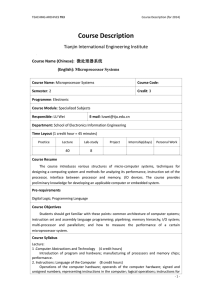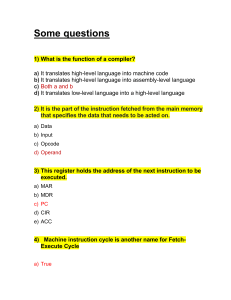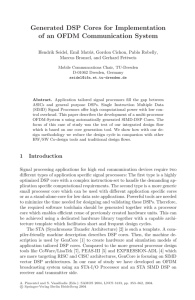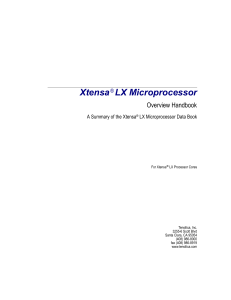Ramon Canal Q1 2014/2015
advertisement
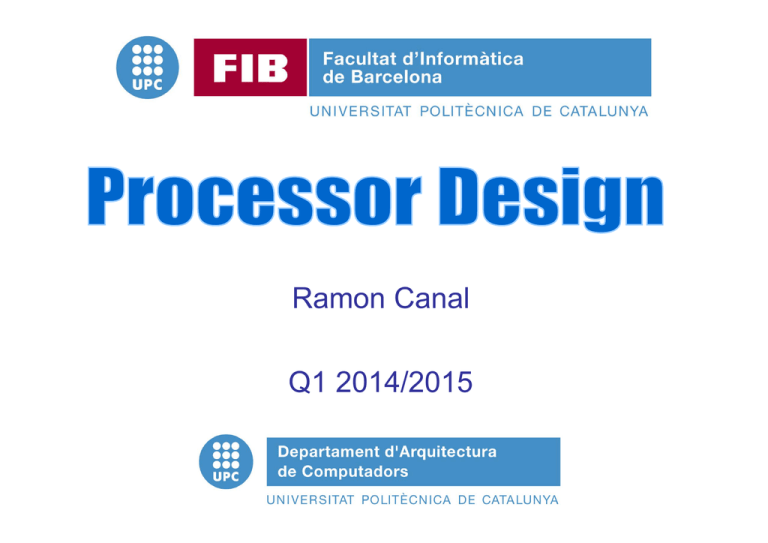
Ramon Canal Q1 2014/2015 Professor • Ramon Canal • Office: B6-2nd floor • Email: rcanal@ac.upc.edu • Office hours: – Tue. 15-17, Wed. 11-13 2 Course materials http://docencia.ac.upc.edu/master/MIRI/PD/ – Course Information – Slides – Lab documentation 3 High-Performance Computing 4 Agenda • Course structure • Evaluation • What will I be able to do after the course? • Topics covered • Lab sessions • Course Schedule • Bibliography 5 Course structure • Lectures (once a week) – Thursday 8-10 • Lab sessions (once a week) – Tuesday 8-10 • Assignments – 6 Lab sessions – 1 Final project (last 4 weeks) 6 Evaluation • Final mark will be based on the performance of: – The lab sessions (Lab) – Presentation of a research topic (T) – The final mark will be computed as: 0,8 x Lab + 0,2 T 7 What will I be able to do after the course? (1) This course offers a more advanced treatment of digital design in the context of microprocessors. With a special emphasis on: 1.Design methodology and practice. 2.Pipeline microprocessor architecture implementation and evaluation 8 Contents 1. Historical Perspective 2. Technology-Aware Processor Design 3. Processor Design Cycle and Fabrication 4. Memory Hierarchy 5. Modern Processor Architectures 9 What will I be able to do after the course? 1. Understand and implement a simple pipelined processor 2. Program skillfully in a hardware description language 3. Understand the intricacies of advanced microprocessor structures a) b) c) d) Memory Hierarchy Branch Prediction Out-of-Order Execution Multithreading 10 Lab sessions 1. Infrastructure setup and test 2. Module definition and especification. Workplan (2 weeks) 3. Module implementation (3 weeks) 4. Module Review (1 week) 5. Insertion in a pipelined CPU (5 weeks) 6. CPU review (1 week) 7. Extension of original module. (due 24/1) 11 Lab sessions - Module Each group will chose one of the following modules to extend their baseline processor 1. 2. 3. 4. 5. Associative cache Branch predictor Store forwarding queue Error detection and correction codes in the memory High-performance functional units (i.e. adder, substracter, etc.) 6. Acccelerators (i.e crypthograhy, neuronal nets, etc.) 12 Bibliography • Mike Johnson, Superscalar Microprocessor Design, Prentice Hall ISBN:0138756341. • Principles of CMOS VLSI Design: A Systems Perspective with Verilog/VHDL Manual (2nd Edition), Neil H. E. Weste, Kamran Eshraghian, Michael John Sebastian Smith, Addison Wesley (2000) • Fundamentals of Digital Logic with VHDL Design (Third Edition), Stephen Brown and Zvonko Vranesic 14


